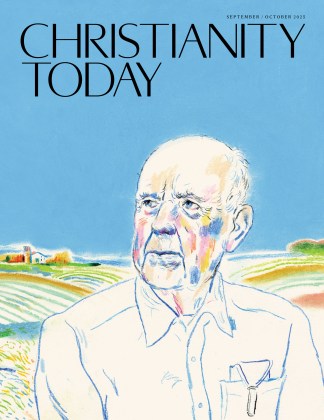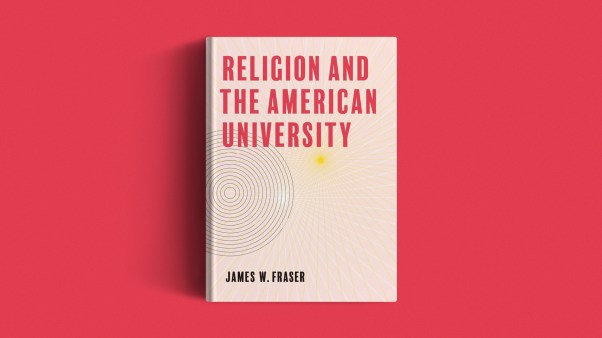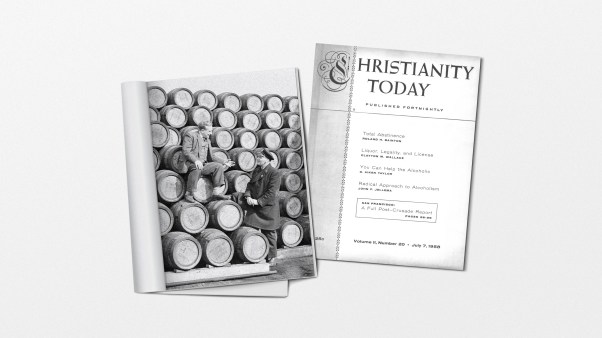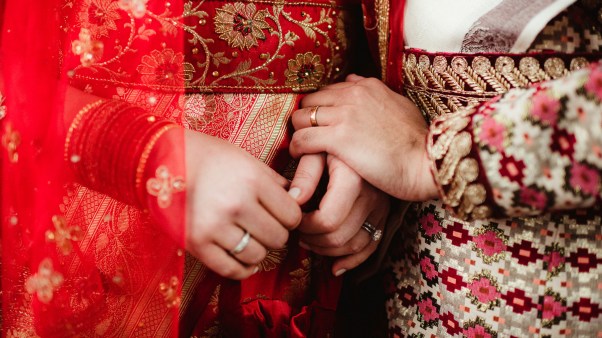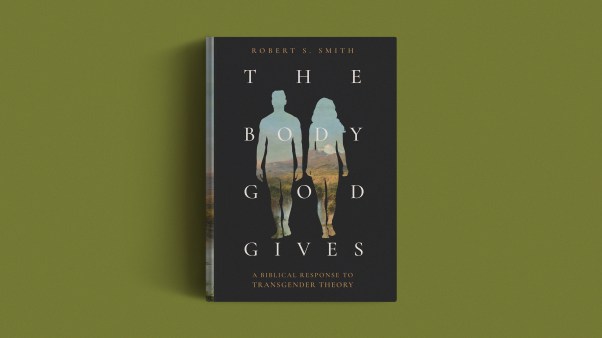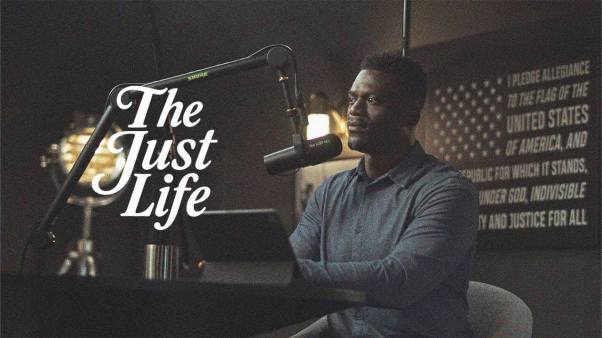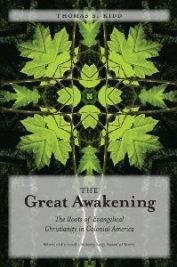 As churchgoers head to the ballot box for midterm elections, most expect the rest of their congregation to be voting the same way they do.
As churchgoers head to the ballot box for midterm elections, most expect the rest of their congregation to be voting the same way they do.Half of US Protestant churchgoers say they’d prefer to attend a church where people share their political views, and 55 percent believe that to be the case at their congregation already, according to a study from Lifeway Research.
“Studies have shown that voting patterns and political affiliation correlate with the type of church and amount of church involvement someone has,” said Scott McConnell, executive director of Lifeway Research. “But when asked if churchgoers want political similarity to flow back into their church relationships, this is desirable for only half of churchgoers.”
Political preference
While 50 percent of churchgoers prefer a politically homogenous congregation, 41 percent disagree, and 10 percent aren’t sure. Overall, the percentage of those looking to attend a church where people share their voting preferences is similar to a 2017 Lifeway Research study, when 46 percent said the same. However, more churchgoers are adamant about worshipping alongside their political peers. Around 1 in 5 (19%) now strongly agree they prefer to attend a church where people share their political views, up from 12 percent in 2017.
“While almost 1 in 5 churchgoers is adamant that they want to attend church with those who share their political views, there are just as many who strongly disagree with that perspective,” said McConnell. “The 23 percent who strongly disagree are clearly saying the source of unity they have with others in their church has nothing to do with partisanship.”
Younger churchgoers are more likely than older ones to prefer sharing a pew with someone of the same politics. Almost 3 in 5 of those under 50 (57%) want a congregation with people who share their political views, compared to 47 percent of those 50 to 65 and 41 percent of those 65 and older.
Ethnicity and education also play a role. White (54%) and African American (53%) churchgoers are more likely to want a church with shared politics than Hispanic churchgoers (25%). Those who are high school graduates or less (44%) are among the least likely.
Denominationally, Methodist (88%) and Restorationist movement (80%) churchgoers are more likely to say they want their congregations to have a common political perspective than Baptists (47%), Presbyterian/Reformed (47%), Lutherans (38%) and those who attend a non-denominational church (38%).
Churchgoers with evangelical beliefs (44%) are less likely than churchgoers who don’t strongly agree with the four core evangelical theology statements (54%) to say they prefer a church where people share their political opinions.
Despite their preferences, churchgoers may stick around even if the rest of the congregation doesn’t share their views. Another 2017 Lifeway Research study found only 9 percent of Protestant churchgoers said they would consider changing churches over political views.
Political perception
Regardless of their preferences, most churchgoers believe they’re among their political tribe when at church. More than half (55%) of US Protestant churchgoers say their political views match those of most people at their church. Fewer than a quarter disagree (23%) or aren’t sure (22%).
Just as more churchgoers strongly prefer a congregation of similar politics today, more churchgoers also strongly believe they are a part of such a congregation. In 2017, 51 percent felt their church was politically homogenous, with 11 percent strongly agreeing. Today, 21 percent strongly agree.
Additionally, fewer churchgoers are seemingly unsure about the political opinions of their fellow congregation members. In 2017, 30 percent said they weren’t sure if their political views matched those of most others at the church. That dropped to 22 percent in 2022.
“If one looks at the culture today, you might assume that most churches have been arguing over politics as well. While it appears more churchgoers notice the political views of other attendees, only 28 percent of pastors agree (14 percent strongly) that their church has experienced significant conflict in the last year,” said McConnell. “Those who want political continuity may simply want a respite from political strife at church, and others may want to move together in political action.”
For many groups, their perception of their church matches their preferences. Older churchgoers, those 65 and older, are the least likely to think most people in their church share their politics (46%) and the most likely to say they aren’t sure (32%). African American (60%) and white (58%) churchgoers are also among the most likely to agree. Denominationally, Methodists (89%) and those a part of a Restorationist movement church (76%) believe most of the fellow churchgoers share their political views.
Churchgoers who don’t qualify as evangelical by belief are just as likely to say they prefer to worship in a church that shared their politics (54%) as they are to believe that is the case (53%). Churchgoers with evangelical beliefs, however, are different. They’re more likely to believe they belong to a congregation that predominantly agrees with them politically (59%) than they are to say that’s what they’d prefer (44%).
Based on an online survey of 1,002 Americans was conducted September 19-29, 2022. For more information, view the complete report and visit LifewayResearch.com.
Good history books are a gift that keeps on giving. Baylor University scholar Thomas Kidd published The Great Awakening: The Roots of Evangelical Christianity in Colonial America in 2007. But this landmark contribution to a much-studied period will long shape our understanding of the dynamic revival that spawned the modern evangelical movement.
Regarding that thorny question of evangelical origins, Kidd does not go so far as his colleague David Bebbington, who has argued for a “sharp discontinuity” between the transatlantic revival and earlier Protestant expressions. Rather, Kidd describes the American evangelical tradition as a “new elaboration” of the Reformation.” In fact, he identifies three “chief tributaries” that fed into the burgeoning movement: Continental Pietism, Scots-Irish Presbyterianism, and Anglo-American Puritanism. But the “new elaboration” concerns “dramatically increased emphases on seasons of revival, or outpourings of the Holy Spirit, and on converted sinners experiencing God’s love personally.” This elaboration led to no small controversy in the 1740s.
But Kidd argues that the Old Light/New Light dichotomy oversimplifies what were actually fluid responses to the awakening. In place of this dualistic framework, Kidd suggests a three-part division. As a result, Kidd’s narrative elevates radical evangelicals who overturned social conventions. They worried moderate evangelicals who defended the revivals and incurred the wrath of anti-revivalists who justified their opposition by citing radical enthusiasm.
While many historians have been occupied by the debates between Charles Chauncy, an Old Light, and Jonathan Edwards, a New Light, Kidd’s attention to the radicals reveals their significant contributions in shaping American evangelicalism. They did not consider education necessary for ministry. Women and racial minorities sometimes served as church deacons and elders. They welcomed unusual manifestations of the Spirit. They leveled the lingering distinctions between ordained ministers and laypeople by criticizing pastors and telling laypeople they could have full assurance of salvation here and now. Kidd’s argument about the radical influence brings him into conflict with Nathan Hatch’sThe Democratization of American Christianity, in which he argues that the American Revolution unleashed the populism that characterizes evangelicalism still today.
Though he acknowledges the work of W. R. Ward and Mark Noll in linking the American awakening with events in continental Europe and Great Britain, Kidd focuses on the colonial radicals and moderates. As he tells this story, Kidd declines to offer either a wholly supernatural or entirely natural explanation of the awakening. Radicals and moderates alike understood the awakening as a special outpouring of the Holy Spirit. But looking back with an analytical eye, Kidd notices that the constant threat of war with powerful France and Spain between 1688 and 1763 scared colonists who hoped the display of godliness in the revivals would lead God to show mercy and save them from Catholic threats. Kidd also notes the role of new media in spreading news of awakenings in nearby and distant towns. New periodicals such as Thomas Prince’s The Christian History stoked interest among Christians in seeing this dynamic movement spread to their hometowns.
As he rebuts Jon Butler’s argument that the Great Awakening was an “interpretive fiction,” Kidd acknowledges that many historians have perpetuated falsehoods about the revival. Kidd essentially agrees with Butler that the awakening did not lead directly to the Revolution, though he acknowledges that many evangelicals enthusiastically advocated breaking with Great Britain. And he rejects any sharp break between the First Great Awakening, peaking between 1740 and 1743, and the Second Great Awakening, which started in 1800. Actually, revivals predated even the surprising work described by Edwards in 1734-35, and they continued until the Revolution concluded in 1783.
“There was, really, no Second Great Awakening, but rather a long-term turn toward Baptist and Methodist piety from the American Revolution to the Civil War, punctuated by new revivals like the one at Cane Ridge, Kentucky, in 1801,” Kidd writes.
Kidd’s book may overwhelm some readers who aren’t already familiar with the key figures of the First Great Awakening. But his sweeping, fast-paced tour through the period has already become a must-read for anyone who wants to uncover the roots of American evangelicalism.
